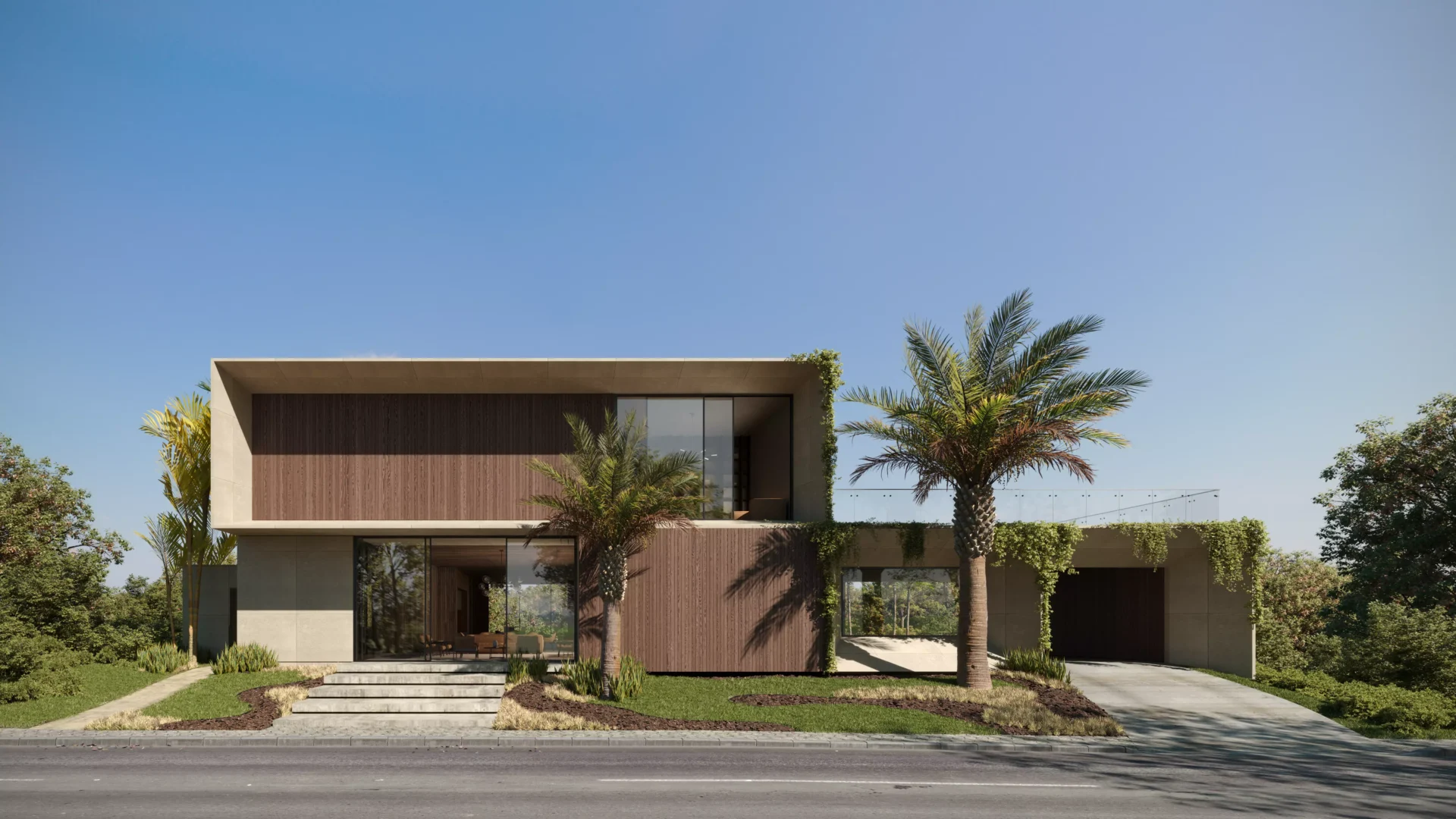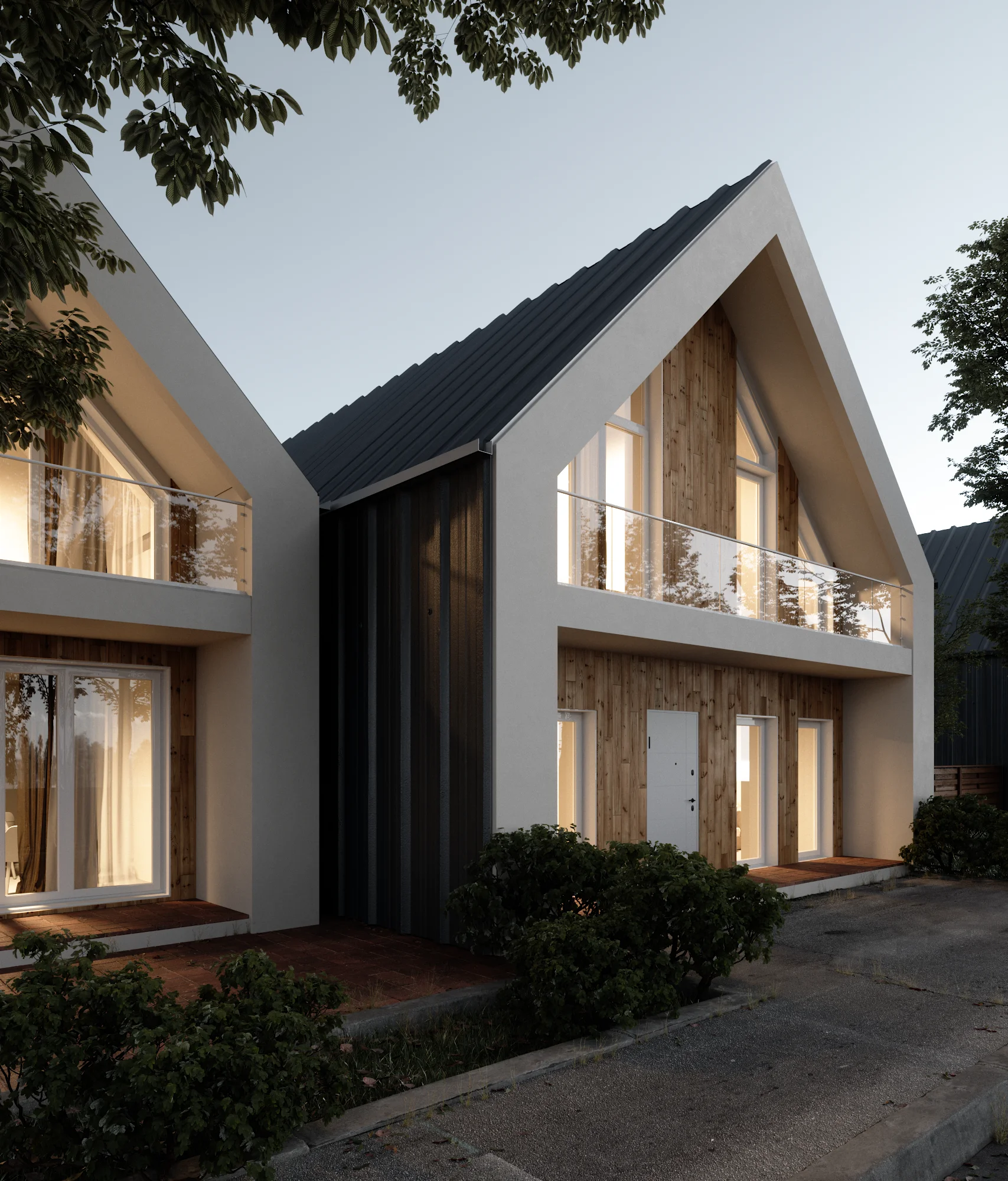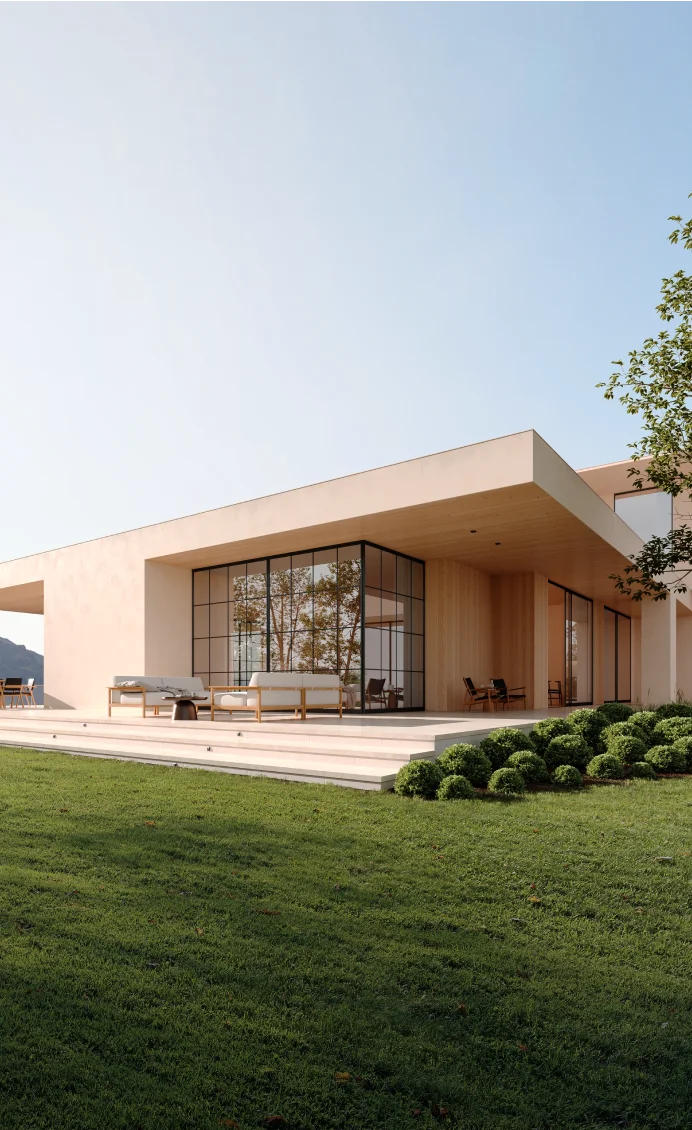Architectural visualization has been one of the fastest-growing industries recently. Architects, engineers, interior designers, and real estate professionals have high hopes for the work of visualizers. After all, this work helps to bring amazing projects to life.
An architectural expert is a person responsible for creating visual representations of architectural projects using modern software and hardware. These visual representations are often used to help customers understand the project and what it will look like after construction. But what exactly does it take to be a skilled visualizer? Here are the top 7 skills you should have to succeed in this field.
Key takeaways:
- A strong foundation in technical proficiency with 3D modeling and rendering software is crucial for an architectural visualizer to accurately represent architectural designs and concepts.
- Attention to detail is vital in architectural visualization, as even the smallest texture or element can significantly impact the overall visual impact and realism of the project.
- The ability to think creatively and come up with unique ideas allows an architectural visualizer to bring innovation and originality to their work, capturing the attention of clients and viewers.
- Effective communication skills enable an architectural visualizer to understand and interpret client requirements accurately, ensuring that the final visualizations align with the desired vision.
- Time management skills are essential to ensure efficient workflow and meet project deadlines, enabling an architectural visualizer to deliver timely results while maintaining quality standards.
- Problem-solving skills are invaluable in the architectural visualization process, as unexpected challenges may arise that require quick thinking and innovative solutions to overcome.
- A genuine passion for architecture and design serves as a driving force for an architectural visualizer, fueling their dedication and commitment to creating visually stunning and impactful representations of architectural projects.
What is an architectural visualizer?
Architectural visualization is a technical process that involves the creation of computer-generated images, animations, and virtual tours of buildings or other architectural objects. An architectural visualizer is a skilled worker
who uses modern software to create these visualizations. They use 3D modeling and rendering software, animation, and virtual reality tools to create high-quality rendering. The ultimate goal of an expert is to help stakeholders envision the final product before it is built.
Architectural rendering has become an important tool in architecture and construction. It allows architects, engineers, and builders to communicate their ideas and designs more effectively to clients and stakeholders. With visualization, clients can see the final product before it is built. This helps them make more informed decisions about the construction process.
The rendering process consists of several stages, including conceptualization, modeling, texturing, lighting, and rendering. The specialist starts by developing a design concept and creating a rough 3D model of the building or structure. Then they add textures and lighting to the model to make it more realistic. Finally, they render the model to produce high-quality images and animations that can be used for presentations, marketing, and other purposes.
However, architectural visualization is not limited to buildings and structures. It can also be used for landscape design, interior design, and product design. To avoid being unfounded, here are some examples. An interior designer can use rendering to create photorealistic images of a room with different furniture arrangements and color schemes. This can help clients visualize the final product and make better decisions about the design and layout of their space.
An architectural visualization is a revolutionary tool that is continuously pushing the entire architecture and construction industry forward. It allows architects, engineers, and builders to communicate their ideas and designs more effectively and helps clients visualize the final result before it is built. With the help of architectural rendering, the design and construction process has become more efficient, cost-effective, and innovative.
Job description of Architectural visualizer
Architectural experts are in high demand due to their ability to create realistic and immersive visualizations. It is a highly sought-after profession today.
Successful visualizers should have a strong portfolio that demonstrates their skills and experience in creating high-quality visualizations of architectural projects. Most employers expect you to have a degree in architecture, design, or a related field.
In addition to creating visualizations, architectural visualizers may also be asked to collaborate with architects and designers to ensure that the visualizations meet project specifications. This requires communication skills and the ability to work well in a team.
Managing deadlines and budgets for multiple projects simultaneously is also an important part of the job. This requires strong organizational skills and the ability to prioritize work effectively.
Architectural experts also need to be able to work closely with clients and stakeholders to make sure they understand the design and can visualize the final product. This requires strong interpersonal skills and the ability to explain complex concepts clearly and concisely.
Overall, the work of an architectural specialist is challenging and rewarding. It requires a unique combination of technical and creative skills, as well as the ability to work well under pressure. If you have a passion for architecture and a talent for creating stunning visualizations, this could be the perfect career for you.
7 Skills to Consider When Hiring an Architectural Visualizer
If you are looking to hire an expert, then you need to be on the hunt for someone who has a unique set of skills that match your project’s needs. Here are the top 7 skills to consider when hiring an architectural specialist:
1. Technical proficiency:
You need someone who is highly proficient in 3D modeling and rendering software such as AutoCAD, RhinoCeros, SketchUp, and Revit. The ability to use these programs effectively is essential in creating stunning visualizations that accurately represent the intended design. A skilled visualizer should be able to bring your project to life in a way that is both accurate and visually appealing.
2. Creativity:
An architectural expert should have a keen eye for design and have the ability to visualize space and form creatively. They should be able to take your ideas and transform them into something visually stunning. A good specialist should be able to think outside the box and come up with unique design solutions that meet your project’s needs.
3. Attention to detail:
The smallest details can make a big difference in designs. A visualizer should have a meticulous eye for detail to ensure precision in their work. They should be able to spot inconsistencies and errors in the design and fix them before the final product is delivered.
4. Communication skills:
Architects, designers, and clients will have questions and concerns throughout the project. Your specialist should be able to communicate their ideas and respond to feedback in a clear and concise manner. They should be able to explain their design choices and provide solutions to any issues that arise during the project.
5. Project management:
An expert who can manage their time and workflow effectively is essential. They should be able to handle multiple projects and deadlines simultaneously without compromising quality. A good specialist should be able to prioritize their workload and deliver projects on time and within budget.
6. Collaboration:
An architectural visualizer needs to be able to work closely with architects, designers, and other stakeholders in the project. Being able to collaborate smoothly and efficiently is necessary to ensure the project’s success. A skilled expert should be able to take feedback and incorporate it into their work while still maintaining the integrity of the original design.
7. Professionalism:
You need someone who is goal-oriented and can work independently and with integrity. A good specialist should have the ability to handle client’s feedback and make changes accordingly while still maintaining a professional relationship throughout the project. They should be able to deliver a high-quality product that meets your project’s needs and exceeds your expectations.
When hiring a visualizer, it’s important to consider all of these skills to ensure that you find the right person for your project. A skilled expert can take your ideas and turn them into a stunning visual representation of your design. With the right skills and experience, they can help you bring your project to life and make it a success.
Where to Find an Architectural Visualizer?
Architectural rendering is a crucial aspect of any building or construction project. It helps stakeholders to visualize the finished product, identify potential design flaws, and make necessary changes before the actual construction begins. If you are looking for an expert, there are several options available to you.
Architectural Visualization Companies
One option is to outsource your visualization needs to an architectural rendering company. These companies have a team of experienced specialists who can bring your project to life. They have access to the latest software and technology, and they can provide you with high-quality 3D renderings and animations. However, outsourcing can be expensive, and you may not have complete control over the project.
Hiring a Full-Time Employee
If you have a large project or a long-term need for visualization services, you may want to consider hiring a full-time visualizer. This option gives you complete control over the project, and you can work closely with the specialist to ensure that your vision is accurately represented. However, hiring a full-time employee can be expensive, and you will need to provide them with the necessary equipment and software.
Portals for freelancers
Another option is to use freelance portals. Among the most popular services are Upwork and Freelancer. These platforms allow you to connect with talented and experienced experts from all over the world. You can browse their portfolios, read testimonials from previous clients, and communicate with them directly to make sure they understand your project requirements. Freelance specialists can be more affordable than outsourcing or hiring a full-time employee, but you will need to carefully approach the selection process to ensure that you find a reliable and qualified professional.
When choosing an expert, it’s important to consider their qualifications, and references. You should also have a clear idea of your project requirements and timeline to ensure that the specialist can meet your needs. With the right expert, you can bring your project to life and make sure it meets your vision and exceeds your expectations.
How to Choose an Architectural Visualization Company?
Choosing an architectural rendering company to work on your project can be overwhelming. Selecting a company that can provide you with high-quality and professional services is key. Here are some things to look out for when selecting a company:
Experience:
An experienced company will have an extensive portfolio with previous works that illustrate their ability to create visually stunning renderings.
Technical proficiency:
Ask about the company’s software expertise, and see if their results match your expected standards.
Communication and project management:
You need a company that can handle your project with professionalism and clarity throughout the process, and keep you informed throughout every phase of the project.
Team:
Companies that have a team composed of designers, architects and visualizers could potentially meet your project goals more effectively than an individual who specializes in one specific area of architecture.
References:
Ask for references from previous clients to hear their thoughts and opinions both good and bad about working with the company you are considering hiring for your project.
Conclusion
As we’ve seen, architectural visualization plays an indispensable role in the life cycle of a construction project. Whether you’re looking to hire an expert, turn to an outsourcing company, or want to learn on your own, it’s important to have a full understanding of the skills and experience needed to succeed in this field. Keep in mind the tips we share here and use them to develop your abilities and improve your architectural rendering skills.
FAQ:
What role does an architectural visualizer play in my design process?
An architectural visualizer can be an invaluable asset to your design process. These professionals use computer-aided design software to produce 3D renderings and animations of your design concepts, including both interior rendering and exterior design rendering. These visualizations can help your clients fully understand and appreciate your vision for a project.
What qualifications should I look for in an architectural visualizer?
The ideal architectural visualizer should demonstrate proficiency in 3D modeling software, have a strong understanding of architectural principles, exhibit keen attention to detail, and possess a creative flair. Good communication skills are also essential, as they need to effectively understand and interpret your design ideas.
Do all architectural visualizers have formal architectural education?
Not necessarily. While a background in architecture can be beneficial, it isn’t a strict requirement. Understanding architectural principles is key, and this can be gained through various avenues, including specialized courses or self-study.
Which software skills should an architectural visualizer have?
A skilled architectural visualizer should be proficient in using a range of 3D modeling and rendering software. This typically includes AutoCAD, 3Ds Max, Revit, SketchUp, and Adobe Creative Suite.
Why are communication skills important for an architectural visualizer?
Effective communication is crucial as visualizers need to work closely with designers like yourself, as well as architects and clients. They must be able to interpret your ideas accurately and convey any potential issues or alternative suggestions.
How does creativity contribute to architectural visualization?
Creativity is what brings a design to life. A creative visualizer can interpret your designs in unique and aesthetically pleasing ways, capturing the essence of your vision and presenting it in a way that resonates with your clients.
How can problem-solving skills benefit the visualization process?
Architectural visualizers often face challenges such as creating realistic renderings within project constraints, adapting designs to suit client preferences, or working within tight schedules. Strong problem-solving skills can help them navigate these challenges effectively and deliver high-quality results.














